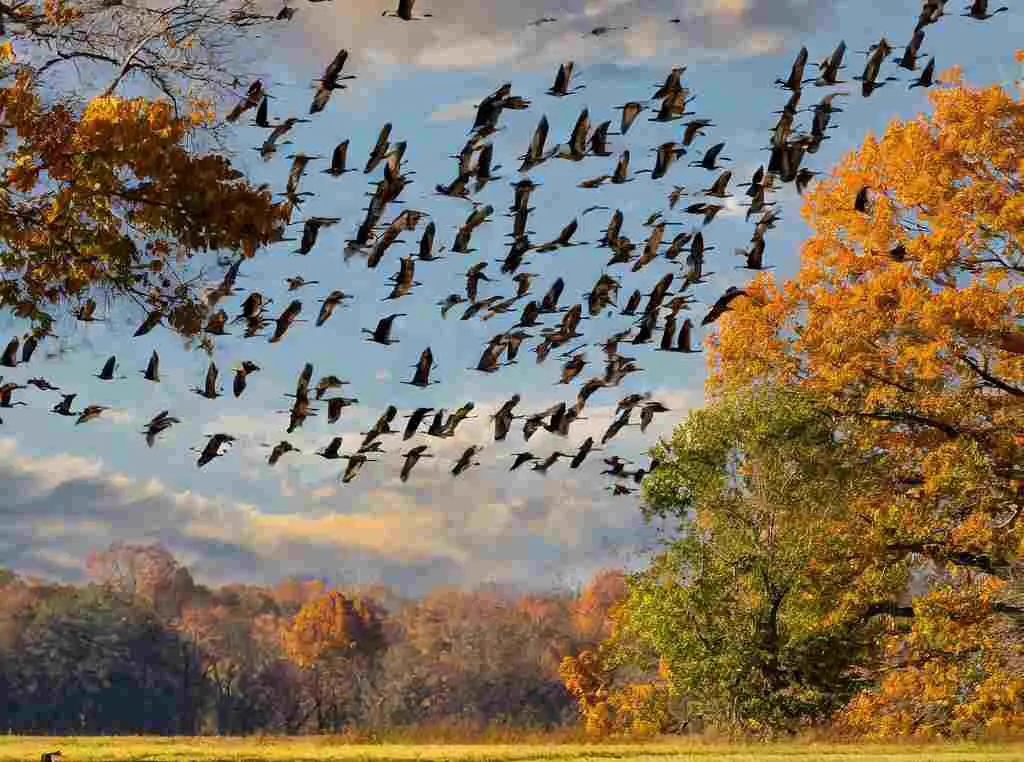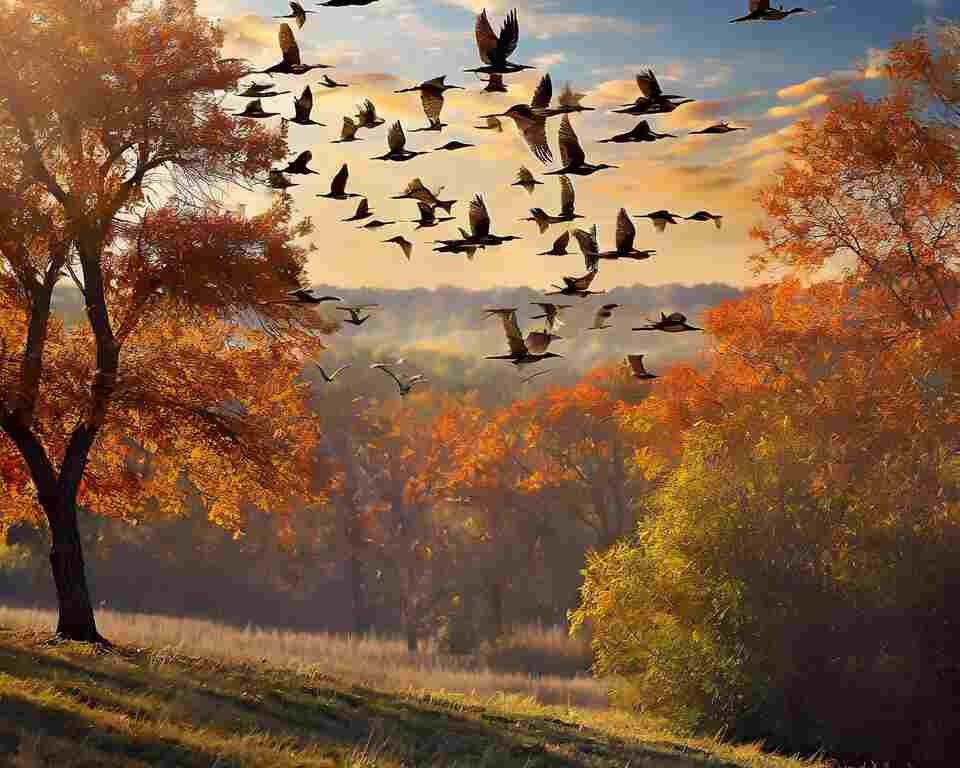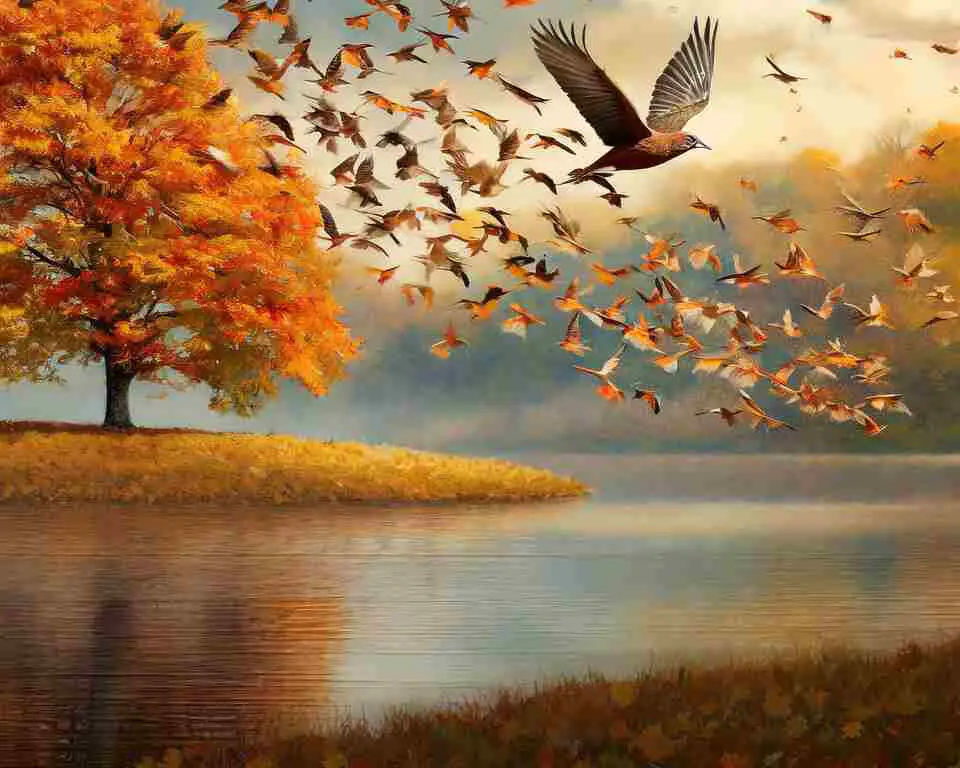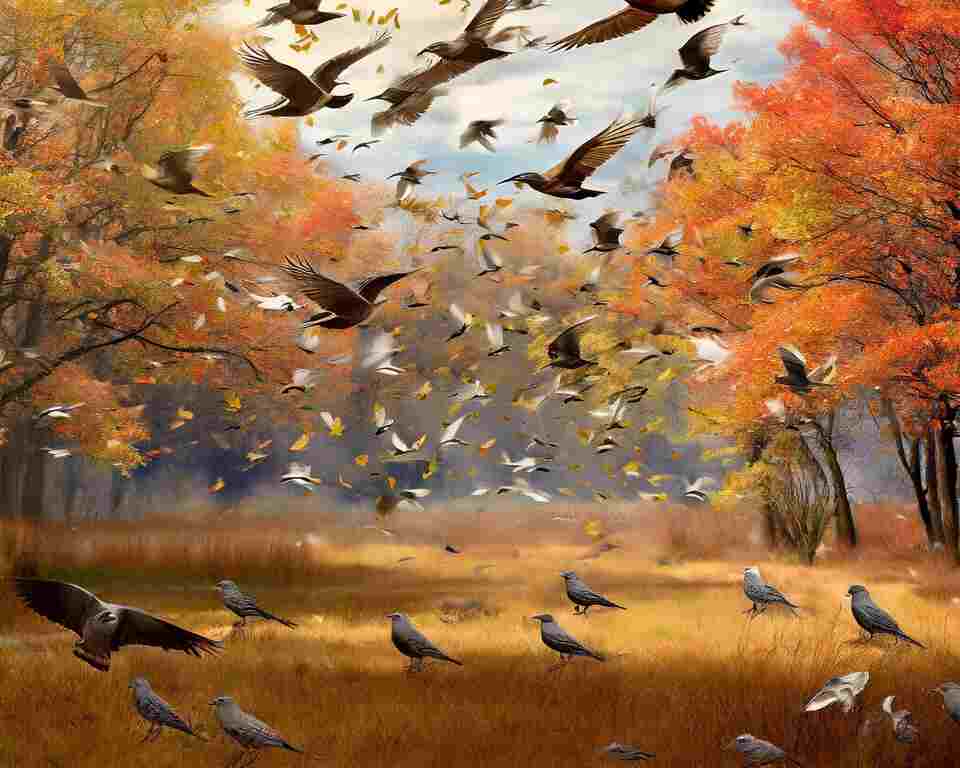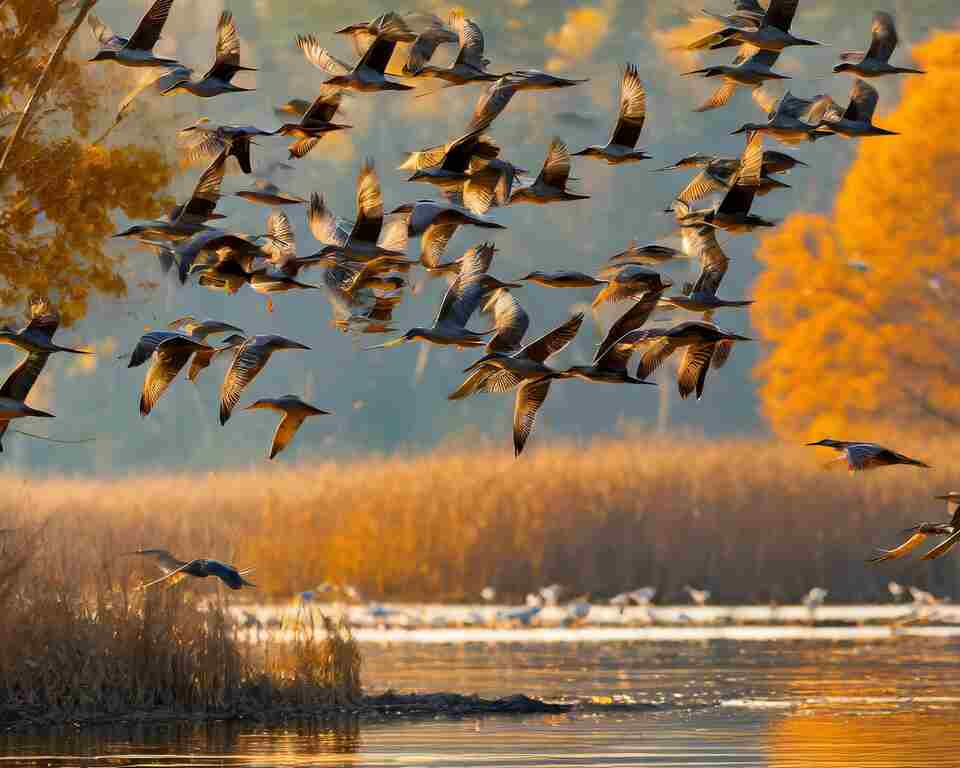Ever wondered, how to track bird migration? Tracking bird migration is easier than you might think, and it starts with understanding migration patterns and using tools like bird watching apps, field guides, and even GPS tracking. By paying attention to key migration times and locations, you can observe and document the incredible journeys of migratory birds. In this article, you’ll learn how to start tracking bird migration, the tools you’ll need, and what to look for along the way.
Table of Contents
- 1 The Marvels of Migration: A Personal Journey
- 2 Understanding the Migratory Imperative
- 3 Essential Tools for Tracking Bird Migration
- 4 Secret Tips for Successful Migration Tracking
- 4.1 1. Mastering the Art of “Invisible” Observation
- 4.2 2. Leveraging Cutting-Edge Predictive Tools
- 4.3 3. Decoding Micro-Migration Routes
- 4.4 4. Harnessing the Power of Nocturnal Migration
- 4.5 5. Employing Citizen Science Platforms
- 4.6 6. Decoding the Language of Avian Behavior
- 4.7 7. Exploring Advanced Tracking Methods
- 5 Best Locations for Bird Migration Tracking
- 6 Respecting Nature: Birdwatching Responsibly
- 7 The Future of Bird Tracking: Tech in Action
- 8 From Observer to Advocate: How to Help
- 9 Conclusion
- 10 Author
The Marvels of Migration: A Personal Journey
Before we dive into the nuts and bolts of tracking, let me share a personal anecdote that ignited my passion for this pursuit. It was a crisp autumn morning in Cape May, New Jersey—a legendary hotspot for fall migration. As I stood on the beach, binoculars in hand, I witnessed what locals call a “fallout.” Thousands of warblers, having flown all night across the Delaware Bay, suddenly descended en masse into the nearby coastal thickets, their colorful plumages a stark contrast against the drab autumn foliage.
This spectacle wasn’t just visually stunning; it was a moment of profound realization. These tiny birds, some weighing less than a AA battery, had just completed a leg of a journey that would ultimately take them thousands of miles from their breeding grounds to wintering sites in the tropics. How did they navigate? What drove them to undertake such perilous journeys? And how could we, as observers, better understand and protect these incredible travelers?
These questions set me on a path to unravel the secrets of bird migration tracking, and I’m excited to share what I’ve learned with you.
Understanding the Migratory Imperative
To truly appreciate the art of tracking bird migration, we must first understand why birds undertake these epic journeys.
The Driving Forces Behind Migration
Birds migrate for a complex interplay of reasons, each a crucial piece in the puzzle of their survival:
- Food availability: As seasons change, so do food sources. Many insectivorous birds, for instance, must move south as winter approaches and insect populations dwindle in northern latitudes.
- Breeding opportunities: Some species travel vast distances to reach specific regions that offer ideal conditions for nesting and raising young. The Arctic Tern, for example, migrates from the Arctic to the Antarctic and back each year, covering over 44,000 miles annually to take advantage of the abundant food and long daylight hours at both poles.
- Climate adaptation: Harsh weather conditions, particularly extreme cold, drive many species to seek more temperate climes during winter months.
- Day length changes: Shifting daylight hours trigger hormonal changes in birds, serving as a biological cue to prepare for and initiate migration.
The Rhythm of the Seasons: When Do Birds Migrate?
While birds are on the move year-round, migration generally peaks during two main periods:
- Spring migration: From February to early June, birds move from southern wintering grounds to northern breeding areas. This movement is often more rushed, as birds race to claim the best breeding territories.
- Fall migration: August to early December sees birds returning to their wintering grounds. This migration is typically more leisurely, with birds often lingering at stopover sites to refuel.
Interestingly, some species engage in more complex patterns. The American Golden-Plover, for instance, follows an elliptical migration route, traveling up the middle of North America in spring but returning along the Atlantic coast in fall.
Essential Tools for Tracking Bird Migration
Now that we understand the “why” and “when” of bird migration, let’s explore the “how” of tracking these journeys. Every good detective needs the right tools, and bird migration tracking is no exception. Here’s your essential toolkit:
- Binoculars: Your primary window into the world of migrating birds. Opt for a pair with 8x or 10x magnification for a good balance of detail and field of view.
- Field guide: A comprehensive guide is indispensable for species identification and understanding migration patterns. I personally recommend the Sibley Guide to Birds for its detailed illustrations and range maps.
- Notebook and pen: There’s no substitute for good old-fashioned note-taking. Record your observations, including species, numbers, dates, and locations.
- Smartphone or GPS device: These tools are invaluable for logging exact locations and accessing online resources in the field. Apps like eBird mobile make it easy to submit your sightings on the go.
- Weather app: Keep track of weather conditions that may influence bird movements. I’ve found the Windy app particularly useful for its detailed wind and precipitation forecasts.
- Camera: While optional, a camera can be incredibly helpful for documenting difficult-to-identify species or capturing memorable moments.
With these tools in hand, you’re ready to begin your journey into the world of bird migration tracking. But before we hit the field, let’s explore some secret tips that will set you apart from the average birder.
Secret Tips for Successful Migration Tracking
1. Mastering the Art of “Invisible” Observation
The key to witnessing natural migration behavior is to minimize your impact on the birds you’re observing. Here’s how to become virtually invisible in the field:
- Embrace camouflage: Wear muted colors that blend with your surroundings. I once spent a day in a bright red jacket and barely saw a bird—lesson learned!
- Utilize natural blinds: Take advantage of existing vegetation or landscape features to conceal yourself. I’ve had great success using a portable photography blind in open areas.
- Stay downwind: Many birds have a keen sense of smell. Positioning yourself downwind can help prevent detection.
- Practice stillness: Minimize movement and noise. I often arrive at my observation spot before dawn and remain as still as possible as the world awakens around me.
2. Leveraging Cutting-Edge Predictive Tools
While general migration calendars are helpful, savvy trackers use more advanced forecasting tools:
- BirdCast: This remarkable project by the Cornell Lab of Ornithology uses weather radar and machine learning to predict nightly bird migrations across the United States. I’ve used it to plan night-listening sessions with great success.
- eBird Status and Trends: This tool allows you to explore species-specific migration timing and routes based on millions of bird observations. It’s particularly useful for planning trips to catch specific species at stopover sites.
- Local listservs and forums: Connect with experienced birders in your area who often share real-time migration updates. These local experts can provide invaluable insights into micro-migration patterns in your region.
3. Decoding Micro-Migration Routes
While major flyways are well-known, birds often use smaller, localized routes within these broader pathways. Uncovering these micro-routes requires careful observation and local knowledge:
- Study local topography: Birds often follow coastlines, rivers, mountain ranges, or valleys during migration. In my area, a small creek serves as a migration highway for warblers and vireos.
- Identify stopover sites: Look for areas with abundant food sources or suitable habitat where migrating birds may rest and refuel. A local restored wetland in my town becomes a magnet for shorebirds during migration.
- Monitor weather patterns: Local wind patterns and storm systems can influence day-to-day migration routes. I’ve witnessed spectacular “fallouts” of migrants when storms force birds to land en masse.
4. Harnessing the Power of Nocturnal Migration
Many bird species migrate at night, making nocturnal observation a valuable skill:
- Learn to identify flight calls: Many migrating birds emit distinctive calls during night flights. I spent countless nights learning these calls, and it opened up a whole new dimension of migration tracking.
- Use the moon as a backdrop: On clear nights, observe birds silhouetted against the moon using binoculars or a telescope. This technique, known as “moon watching,” can provide estimates of migration intensity and direction.
- Explore thermal imaging: For those willing to invest in technology, thermal cameras can detect the heat signatures of migrating birds at night. While expensive, these devices offer unparalleled insights into nocturnal migration patterns.
5. Employing Citizen Science Platforms
Contribute to and benefit from large-scale migration tracking efforts:
- eBird: This global database allows you to submit your observations and access real-time migration data from around the world. I’ve used it to discover migration hotspots I never knew existed in my own backyard.
- iNaturalist: Share photos and observations of migrating birds, and get help with identification from experts. It’s particularly useful for beginning birders or when encountering unfamiliar species.
- Journey North: Participate in tracking specific migratory species like monarchs, hummingbirds, and whooping cranes. This project offers a fascinating look at how different species navigate their annual journeys.
6. Decoding the Language of Avian Behavior
Observing subtle behavioral cues can provide valuable insights into migration:
- Watch for increased feeding: Many birds engage in hyperphagia (excessive eating) before migration to build up fat reserves. I once observed a group of Yellow-rumped Warblers frantically feeding on bayberries, a sure sign they were preparing for their journey south.
- Note changes in social behavior: Some species may become more gregarious, forming flocks before migration. The sudden appearance of large mixed-species flocks in late summer often heralds the start of fall migration.
- Observe restlessness: Birds preparing to migrate often exhibit increased activity, especially at dawn and dusk. This behavior, known as Zugunruhe, is particularly noticeable in captive birds but can also be observed in wild populations.
7. Exploring Advanced Tracking Methods
For those looking to dive deeper into migration research, several advanced techniques offer unprecedented insights:
- Radio telemetry: Lightweight radio transmitters can be attached to birds to track their movements. This method has revealed astonishing details about migration routes and stopover sites.
- Geolocators: These tiny devices record light levels, allowing researchers to calculate a bird’s location over time. Geolocators have revolutionized our understanding of long-distance migrants like Arctic Terns and Bar-tailed Godwits.
- Stable isotope analysis: By analyzing feathers, researchers can determine where a bird has been based on the unique isotopic signatures of different regions. This technique has shed light on the winter destinations of many migratory species.
While these methods are primarily used by researchers, understanding them can deepen your appreciation for the complexities of migration tracking.
Best Locations for Bird Migration Tracking
While bird migration can be observed almost anywhere, some locations offer particularly spectacular viewing opportunities. Here’s a table of some top migration hotspots around the world, based on my personal experiences and those of fellow migration enthusiasts:
| Location | Best Time to Visit | Notable Species | Personal Experience |
|---|---|---|---|
| Cape May, New Jersey, USA | September-October | Raptors, shorebirds, warblers | Witnessed incredible “fallouts” of warblers and tanagers after storm systems |
| Strait of Gibraltar, Spain/Morocco | August-October | Raptors, storks, bee-eaters | Observed thousands of raptors kettling over the strait before making the crossing to Africa |
| Eilat, Israel | March-May | Raptors, storks, passerines | Amazed by the diversity of species funneling through this desert oasis |
| Point Pelee, Ontario, Canada | May | Warblers, vireos, thrushes | Experienced the “reverse migration” phenomenon, where birds fly back north along the point after overshooting |
| Keoliadeo Ghana National Park, India | October-March | Waterfowl, cranes, raptors | Stunned by the sheer numbers of wintering waterfowl from across Asia |
| Hawk Mountain, Pennsylvania, USA | September-November | Raptors, especially hawks and eagles | Learned to identify raptors at great distances from expert counters |
| Helgoland, Germany | April-May, August-October | Seabirds, passerines | Fascinated by the unique island ecosystem and its importance for migrating seabirds |
| Capo d’Otranto, Italy | April-May | Raptors, storks, pelicans | Witnessed the spectacle of thousands of raptors arriving in Europe after crossing the Mediterranean |
Respecting Nature: Birdwatching Responsibly
As we delve deeper into the world of bird migration tracking, it’s crucial to consider the ethical implications of our activities. Our passion for observing these incredible journeys should never come at the cost of the birds’ well-being or their habitats.
Prioritizing Bird Welfare
- Maintain a respectful distance: Use binoculars or spotting scopes to observe birds without disturbing them. I once witnessed a well-meaning but overzealous photographer flush a group of exhausted migrants from their resting spot—a stark reminder of the importance of giving birds their space.
- Avoid using recorded bird calls: While playback can be tempting to draw out elusive species, it can stress birds and disrupt their natural behaviors, especially during migration when energy conservation is crucial.
- Be cautious with photography: Don’t pursue birds for the perfect shot, and never use flash photography on nocturnal migrants. The momentary disorientation can be deadly for a bird navigating by starlight.
Respecting Habitats and Regulations
- Stay on designated trails: Straying off-path can damage sensitive habitats that birds rely on during migration. I’ve seen firsthand how repeated off-trail excursions can degrade stopover sites.
- Obey local regulations: Many important migration sites have specific rules to protect birds and their habitats. These rules are often based on years of research and observation.
- Practice “Leave No Trace” principles: Ensure your presence doesn’t negatively impact the environment. This includes properly disposing of waste and avoiding the introduction of non-native species.
Sharing Knowledge Responsibly
- Be cautious with rare bird sightings: For sensitive species, consider reporting to local bird clubs or researchers rather than posting publicly. I once observed a pair of endangered Piping Plovers at a little-known stopover site and chose to report the sighting only to local conservation authorities to prevent disturbance.
- Educate others: Use your knowledge to promote bird conservation and responsible observation practices. Every interaction is an opportunity to inspire others to appreciate and protect migratory birds.
The Future of Bird Tracking: Tech in Action
As technology advances, so do our capabilities for tracking and understanding bird migration. Here are some exciting developments that are reshaping the field:
Miniaturization of Tracking Devices
Researchers are developing increasingly smaller and lighter tracking devices, allowing for the study of even the tiniest migratory species without impacting their flight capabilities. I recently attended a conference where a researcher presented data from a tracking device weighing less than 0.3 grams—light enough to be carried by a hummingbird!
Machine Learning and AI
Artificial intelligence is being used to analyze vast amounts of migration data, helping to identify patterns and predict future migration trends with unprecedented accuracy. Projects like BirdCast are just the beginning; soon, we may be able to predict migration patterns with the same precision as weather forecasts.
Collaborative Global Networks
International cooperation among researchers, conservation organizations, and citizen scientists is creating a more comprehensive picture of global bird migration patterns. The Motus Wildlife Tracking System, for example, uses a network of receiving stations across multiple continents to track tagged birds, bats, and insects.
Integration with Climate Science
Bird migration tracking is becoming an important tool in understanding and predicting the impacts of climate change on avian populations and ecosystems. By correlating migration patterns with climate data, researchers are gaining insights into how birds are adapting to our changing world.
From Observer to Advocate: How to Help
Even as an amateur enthusiast, you can play a vital role in advancing our understanding of bird migration and contributing to conservation efforts. Here’s how:
1. Participate in Citizen Science Projects
- Join local bird counts: Many areas conduct regular bird counts, especially during peak migration periods. I’ve participated in the Cape May Hawkwatch for years, and the data collected has been invaluable for understanding raptor migration trends.
- Contribute to online databases: Platforms like eBird and iNaturalist rely on contributions from observers like you. Every sighting, no matter how common the species, adds to our collective knowledge.
- Volunteer for bird banding programs: Many research stations welcome volunteers to help with bird banding during migration seasons. It’s a unique opportunity to see birds up close and contribute to long-term studies.
2. Support Conservation Efforts
- Protect and create habitat: Even small actions like planting native species in your garden can provide crucial resources for migrating birds. My backyard native plant garden has become a popular refueling stop for warblers and thrushes during migration.
- Advocate for bird-friendly policies: Support legislation that protects migratory birds and their habitats. The recent reinterpretation of the Migratory Bird Treaty Act in the U.S. is a perfect example of how policy can impact bird conservation.
- Reduce threats: Take steps to make your home and community safer for birds, such as using bird-safe window treatments and advocating for lights-out programs during peak migration periods.
3. Educate Others
- Lead bird walks: Share your knowledge with others by organizing or leading guided bird walks during migration seasons. I’ve found that nothing inspires conservation action quite like witnessing migration firsthand.
- Give presentations: Offer to speak at local schools, community centers, or nature clubs about bird migration. Your passion can ignite curiosity in others.
- Use social media: Share your observations and experiences to inspire others to take an interest in bird migration. A well-timed photo of a colorful warbler can spark a lifelong interest in birds and conservation.
Conclusion
As we conclude our journey through the world of bird migration tracking, I’m reminded of a quote by the renowned ornithologist Roger Tory Peterson: “Birds are indicators of the environment. If they are in trouble, we know we’ll soon be in trouble.” This sentiment underscores the importance of our efforts to understand and protect these incredible travelers.
Tracking bird migration is more than just a hobby or scientific pursuit—it’s a window into the health of our planet, a testament to the resilience of nature, and a source of endless wonder. Each observation, whether it’s a flock of Snow Geese honking overhead or a tiny Blackpoll Warbler resting in a city park, connects us to a global phenomenon that has captivated humans for millennia.
As you embark on your own bird migration tracking adventures, remember that every sighting, every note in your field journal, and every shared observation contributes to our collective understanding. You’re not just watching birds; you’re participating in a grand tradition of discovery and stewardship that spans generations and continents.
So grab your binoculars, consult your field guide, and step outside. The skies are alive with the movement of millions of birds, each with a story to tell. By learning to read the signs and applying these secret tips, you’ll unlock a world of avian exploration that will continue to amaze and inspire you for years to come.
Happy tracking, and may your skies always be filled with the magic of migration!

